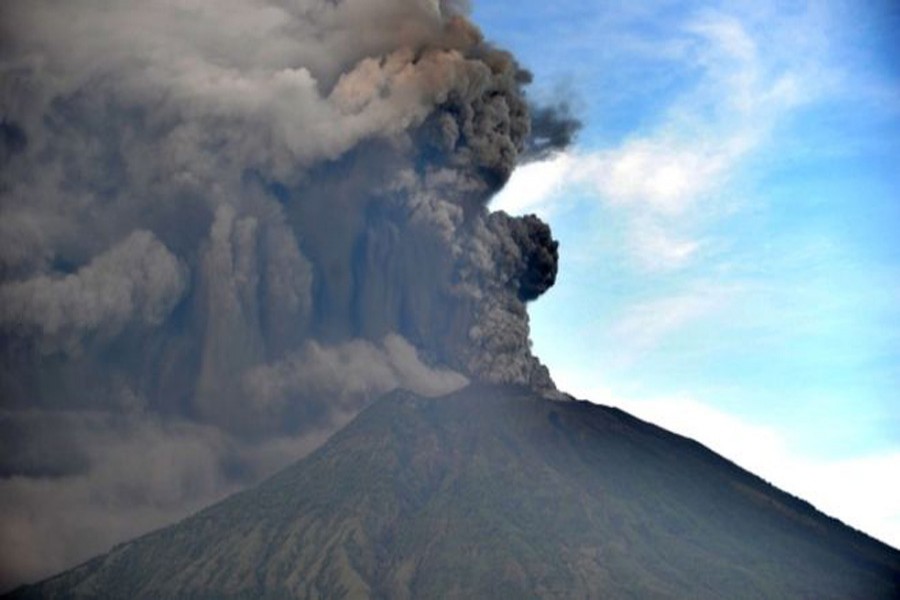Airlines have been issued a "red warning" about the danger of volcanic ash in the skies close to Bali after Mount Agung emitted a thick plume of smoke more than 1,500m (4,921ft) high.
It is the second major emission from the Indonesian island's volcano this week, and flights have been disrupted.
The red warning means an eruption is forecast to be imminent, with significant emission of ash into the atmosphere likely.
Volcanic ash can damage plane engines.
Bali is a major tourist hub. Its main airport is for now operating normally, but some airlines have cancelled flights since volcanic activity was first noticed in September.
Bali volcano: What is it like waiting for an eruption?
Indonesia: Volcano nation
"Tourism in Bali is still safe, except in the danger (zone) around Mount Agung," Indonesia's Disaster Mitigation Agency said in a statement, reorts BBC.
It told people within a 7.5km (4.7-mile) exclusion zone to "immediately evacuate" in an "orderly and calm manner".
About 25,000 people are thought to still be in temporary shelters after more than 140,000 people fled earlier this year after increased volcanic activity prompted fears a major eruption was imminent.
Most of the islanders outside of the immediate exclusion zone were ordered to return home at the end of September, and the mountain has been intermittently rumbling since.
According to official estimates, the holiday island lost at least $110m (£83m) in tourism and productivity during the major evacuation.
The volcano itself is about 70km from the main tourist areas of Kuta and Seminyak.
Indonesia sits on the Pacific "Ring of Fire" where tectonic plates collide, causing frequent seismic and volcanic activity.
It is home to more than 130 active volcanoes. The last time Mount Agung erupted, in 1963, more than 1,000 people died.


